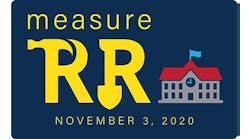When renovating or retrofitting an education facility, administrators do not have to make the entire building accessible to those with disabilities. However, the Americans with Disabilities Act's (ADA) guidelines state that schools must guarantee that all programs must be readily accessible to people with disabilities.
For instance, a school would be allowed to have a sixth-grade classroom on the inaccessible third floor of a building as long as it also had a sixth-grade class in an area of the school that is accessible. Schools also can devise ways short of structural modifications to make a program accessible.
“Acceptable methods of making programs accessible include: reassignment of services to an accessible location; the purchase, redesign, or relocation of equipment; assignment of aides; and structural changes to eliminate barriers,” according to the ADA National Access for Public Schools Project.
A report from the U.S. Department of Education's Office of Civil Rights, “Compliance With The Americans With Disabilities Act: A Self-Evaluation Guide for Public Elementary and Secondary Schools,” provides school officials with details on how to achieve compliance with the ADA. (http://www.edlaw.net/service/guidcont.html).
The guide notes that making a building accessible involves more than just accommodating those with mobility impairments.
“School district officials must ensure that their programs and activities are accessible to qualified individuals with many different types of disability,” says the guide.
Among the accessibility issues school administrators must address when upgrading their facilities are building signage, ramps, adequate parking spaces for those with disabilities, alarms with visible signals, accessible public telephones, the height of water fountains and bathroom fixtures, the width of doorways, accessible restroom facilities, the speed and timing of an automatic door, the type of doorknob, accessible playground equipment, and accessible paths to the play equipment.
The ADA does not specifically mandate acoustical standards for school classrooms, but has worked to have standards for background noise and reverberation time incorporated into local and state building codes.
To comply with the ADA, schools and universities also must look beyond students and staff and ensure that their facilities are accessible for programs and events to which the general public is invited.
“School districts must provide program accessibility to parents, guardians, and members of the public with disabilities for programs, activities, or services that are open to parents or to the public, such as parent-teacher organization meetings, athletic events, plays, and graduation ceremonies,” the guide states.
NOTABLE
2.2
The number of Americans, in millions, who use a wheelchair.
Source: U.S. Census Bureau, “Americans with Disabilities, 1997”
29.3
Percentage of students with orthopedic impairments who spend 80 percent or more of their school day in a regular education classroom, 1988-89
Source: National Center for Education Statistics, “Condition of Education 2002”
45.6
Percentage of students with orthopedic impairments who spend 80 percent or more of their school day in a regular education classroom, 1998-99
Source: National Center for Education Statistics, “Condition of Education 2002”
11.1
Percentage of students with orthopedic impairments who are enrolled in separate facilities, 1988-89
Source: National Center for Education Statistics, “Condition of Education 2002”
4.5
Percentage of students with orthopedic impairments who are enrolled in separate facilities, 1998-99
Source: National Center for Education Statistics, “Condition of Education 2002”

